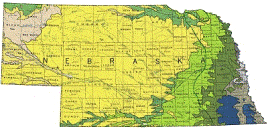US Geological Survey
Document Type
Article
Date of this Version
2016
Citation
U.S. Geological Survey Circular 1422, 255 p.
Abstract
Hawaii is an ecologically isolated archipelago 2,500 miles from the nearest continent. Its isolation resulted in a taxonomically unbalanced flora and fauna with remarkable examples of adaptive radiation among those groups of organisms that won the dispersal sweepstakes. It was one of the last oceanic island groups to be populated by humans, about 900 A.D. by Polynesian travelers and in 1778 by Europeans. Relatively recent colonization by humans did not save it, however, from the biodiversity losses suffered by other isolated archipelagos—it only delayed them (Scott and others, 1988; Pratt and others, 2009a).
Included in
Geology Commons, Oceanography and Atmospheric Sciences and Meteorology Commons, Other Earth Sciences Commons, Other Environmental Sciences Commons


Comments
Published in Perry, M.C., ed.
https://doi.org/10.3133/cir1422